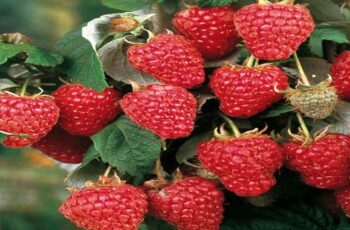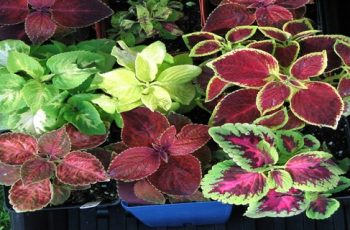Ad Blocker Detected
Our website is made possible by displaying online advertisements to our visitors. Please consider supporting us by disabling your ad blocker.
Planting
Now that you’re enthusiastic about adding this versatile vegetable to your garden, let’s dive into the details.
Planting horseradish is a straightforward and hassle-free process. It thrives when grown from fully intact roots or angled root cuttings. To initiate your horseradish cultivation, commence planting in either late fall or early spring. Ensure you allocate approximately 2 feet of space between each root or cutting, as they tend to expand their reach rapidly. When planting, position them either upright or at a 45-degree angle, with a few inches of soil providing cover for the root.
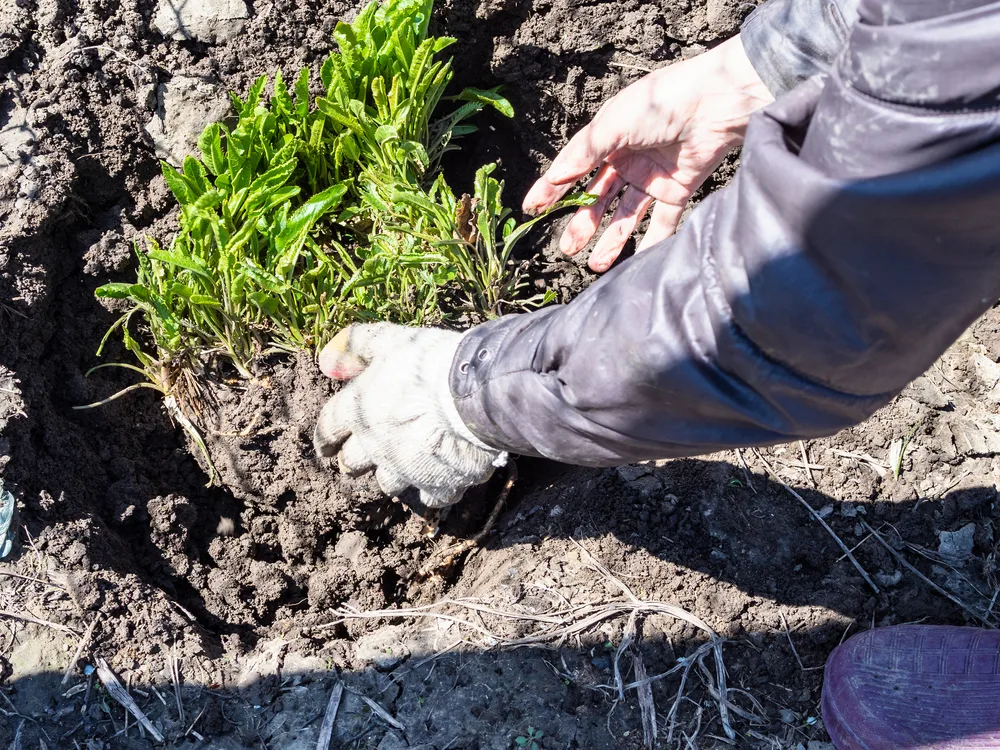
Although horseradish thrives in full sunlight, it can also endure partial shade. When planting, it’s advisable to select a location far from other essential vegetables, ideally in a secluded area. This way, if it does expand beyond your expectations, you can easily maintain control.
Alternatively, consider planting it in a container. Follow the earlier guidance, but ensure the pot is sufficiently deep to accommodate its long roots. Additionally, ensure the container has ample drainage holes. One thing horseradish won’t tolerate is overly moist soil.
Care
Caring for your horseradish proves remarkably straightforward, requiring just two essential elements: healthy soil and moderate watering.
Whether you choose to cultivate it in pots or directly in the ground, prioritize well-draining soil enriched with organic matter. Given horseradish’s robust growth and spreading tendencies, there’s no need for regular fertilization or soil amendments.
The most critical aspect of care revolves around watering. Allowing the soil to dry out for extended periods can result in woody roots, while excessive watering can lead to root rot. It’s always prudent to err on the side of underwatering. Once established, in many regions, it can thrive solely on rainwater. During drier seasons, the occasional additional watering may be necessary, but horseradish is not a thirsty plant by nature.
Harvesting
Once your horseradish has firmly established itself in your garden, you can proceed with harvesting both the roots and leaves. When the time comes, gently loosen the soil around the root, ensuring you collect any fragments that may break off. These broken pieces can be easily replanted, allowing you to perpetuate your horseradish cultivation.
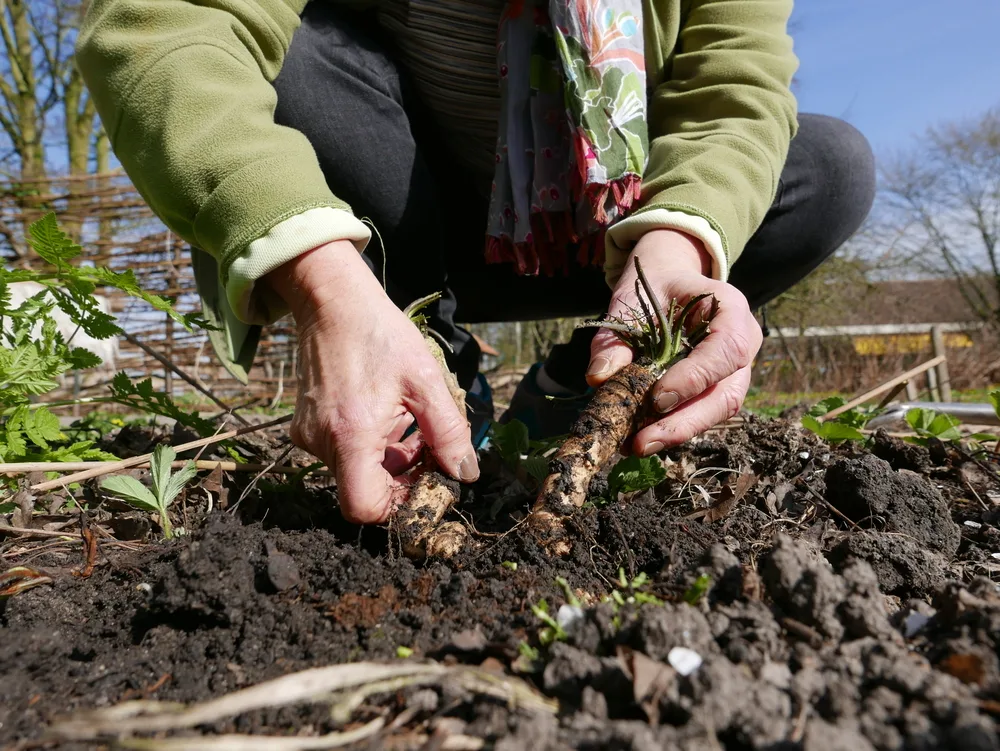
Keep the harvested root in bags in the fridge or freezer, or prepare and preserve it for later use.
Storing, Preparing, And Preserving Your Horseradish
Before storing your horseradish roots, it’s essential to scrub and dry them thoroughly. Afterward, place them in a bag and refrigerate them. To maintain their freshness, it’s best to grate and use the horseradish as needed.
For crafting horseradish sauce, peel the roots and cut them into chunks before blending them into a sauce. Transfer this sauce to a jar and store it in the refrigerator. As straightforward as growing horseradish itself.
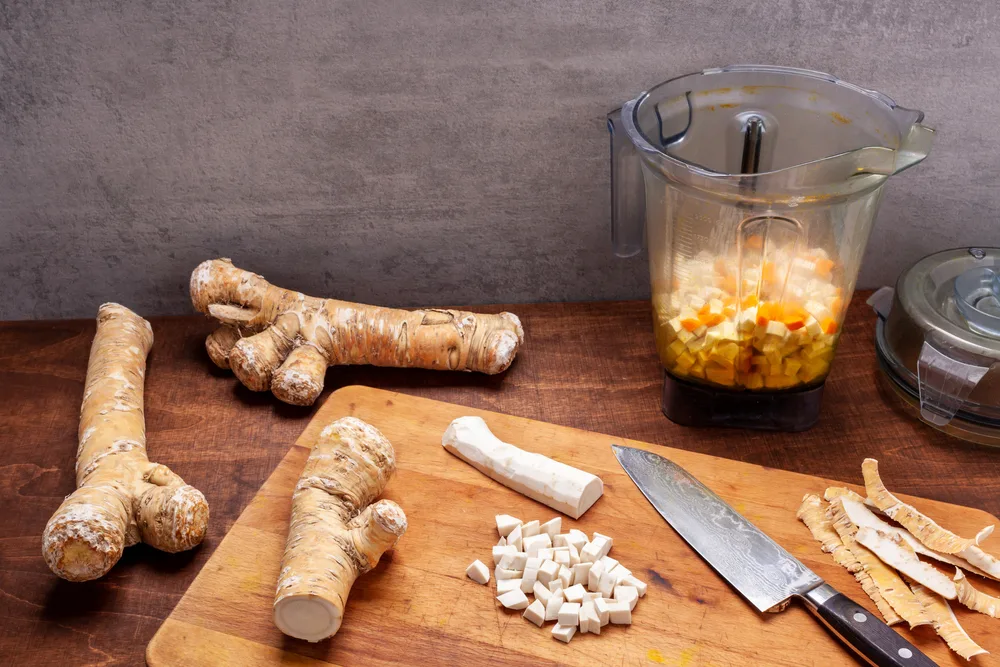
You can also preserve grated horseradish by immersing it in lemon juice or vinegar, though keep in mind that vinegar can slightly alter the flavor.
It’s worth noting that when you prepare horseradish, it disrupts the chemical compounds in the roots, resulting in potent fumes that may be more tear-inducing than those from onions.
Cooking With Horseradish
Now that you have your horseradish roots, condiments, or preserves at hand, it’s time to incorporate horseradish into your culinary creations.
Horseradish proves an excellent enhancement for dips. Simply blend it with other dip essentials like chives, and you’re all set. You can also mix it into melted butter to infuse some zesty flavor into your fried steaks or chicken.
This handy little zester is the perfect tool for grating horseradish as you need it.
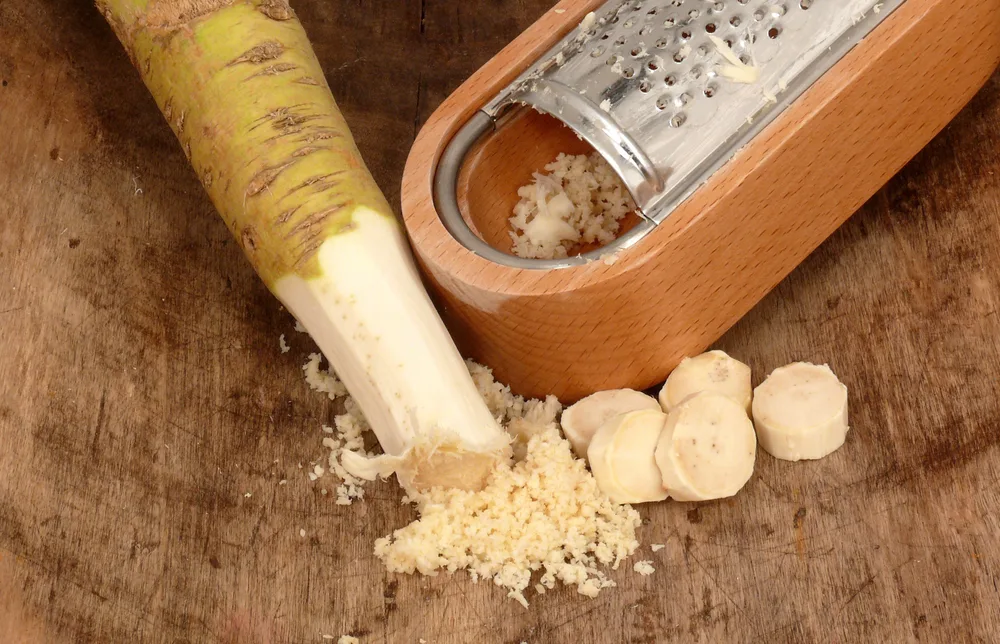
Horseradish proves to be an excellent partner for mayonnaise, injecting a burst of flavor into everyday sandwiches and wraps. Additionally, salads can also benefit from a touch of horseradish magic. Grate some horseradish and have lemon juice, canola oil, and Dijon mustard at the ready. Combine these with parsley and minced shallots, and you’ll craft a delightful salad dressing. For an extra kick, toss in some horseradish leaves.
This versatile vegetable is sure to awaken the inner chef in you, inspiring creativity in the kitchen.
Horseradish As Medicine
Horseradish, encompassing its roots, leaves, and sauce, offers a compelling natural alternative to store-bought medications.
A dollop of horseradish sauce can swiftly alleviate sinus congestion. However, the most effective medicinal use of this herb involves brewing horseradish tea. Grate some horseradish root and add it to boiling water, infusing it with lemon juice and honey. After allowing the tea to steep, strain it, and you’ll have a cold-fighting elixir at your disposal.
Horseradish’s remarkable versatility, as you’ve likely discovered, can ignite your culinary creativity while also providing a remedy for common ailments. Grow it easily, and not only will it enhance your meals but also contribute to your overall well-being and garden health.
